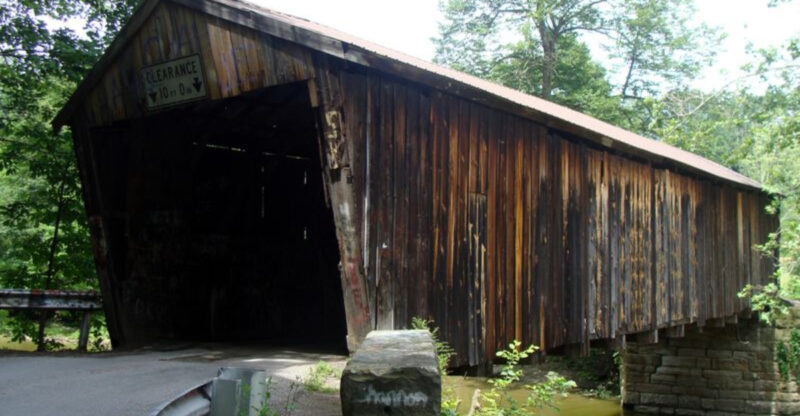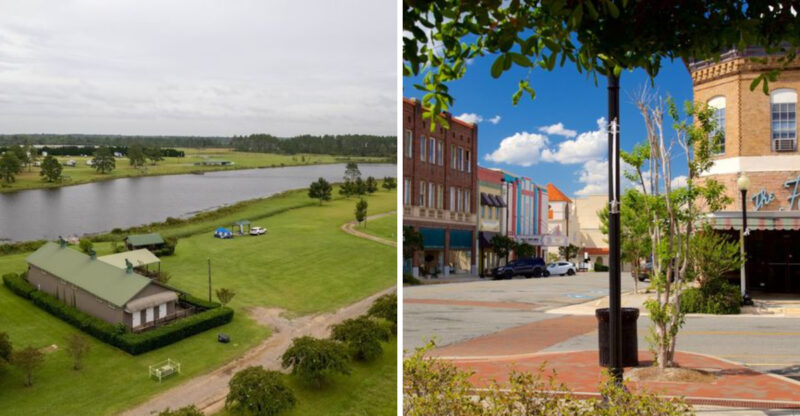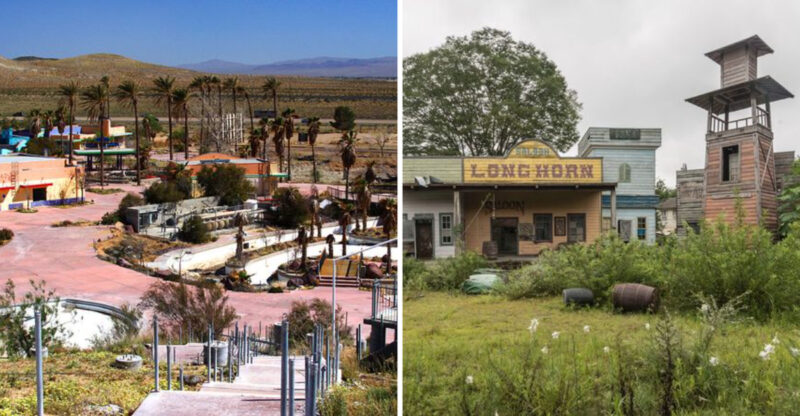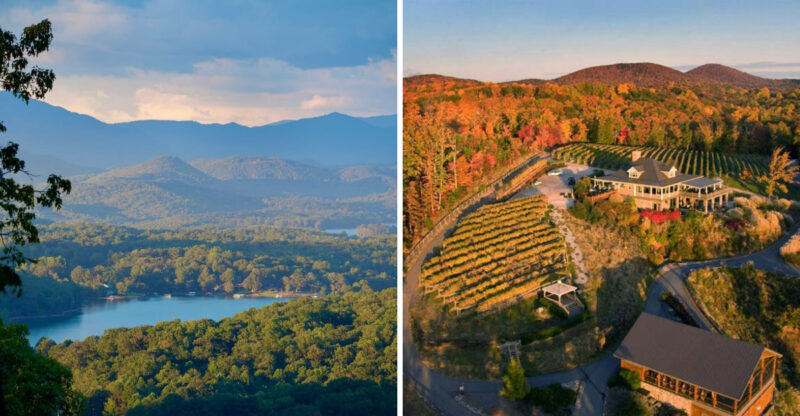Abandoned Nevada Ruins Of A Wild West Boomtown
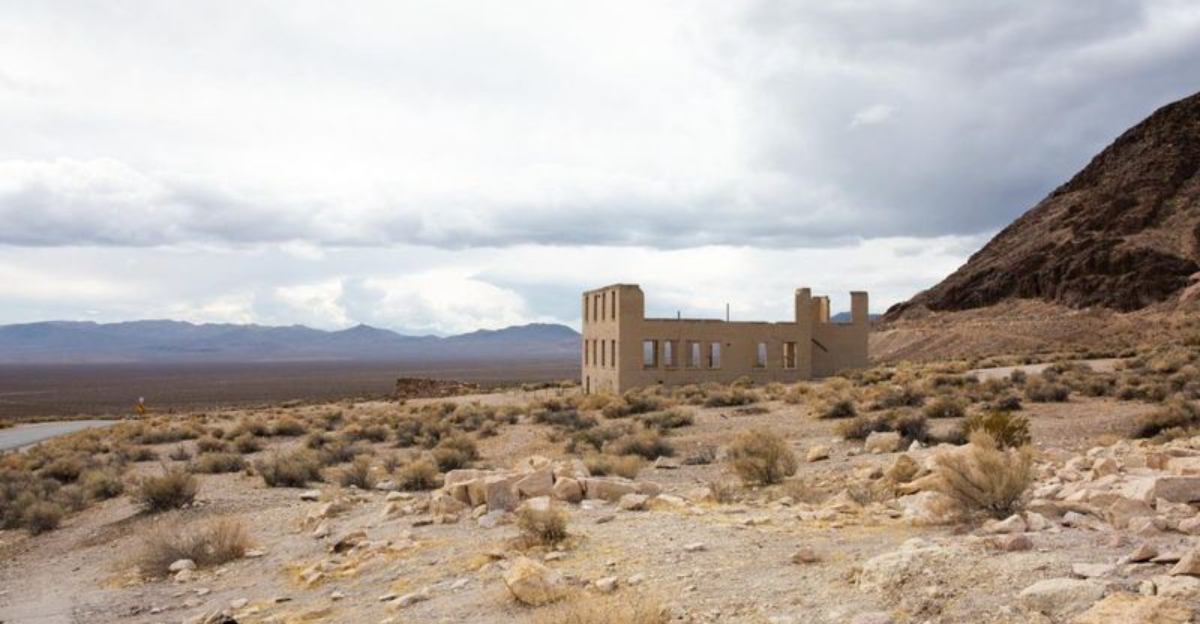
Picture a town that exploded from nothing to thousands of people in just three years, only to vanish like a desert mirage. Rhyolite, Nevada, was that place, a Wild West boomtown born from gold fever and abandoned when fortune ran dry.
Today, crumbling walls and eerie buildings stand frozen in time, whispering stories of dreamers, miners, and a community that disappeared almost overnight.
A Town Born And Dead In A Decade
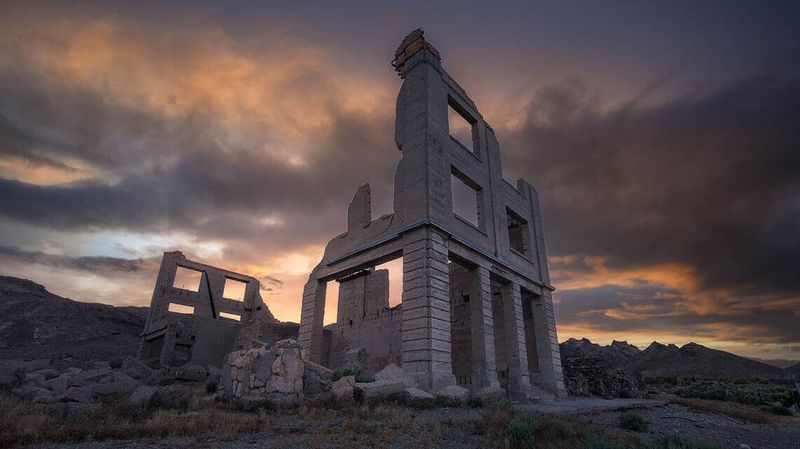
Gold sparked everything in 1904 when prospectors struck it rich in the barren Nevada desert. Within three years, Rhyolite ballooned to nearly 5,000 residents who believed they’d found their fortune. Banks, hotels, and shops popped up faster than weeds after rain.
But dreams don’t last forever. By 1911, the mines started failing and people fled as quickly as they’d arrived. Just twelve years after its birth, Rhyolite became a ghost town with tumbleweeds replacing the bustling crowds that once filled its dusty streets.
The Magnificent Cook Bank Building
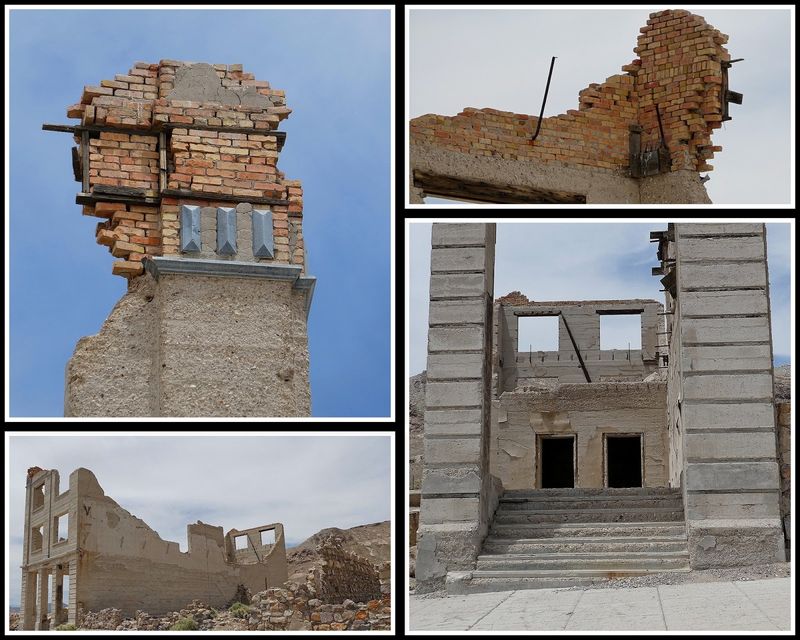
Imagine spending $90,000 in 1908 on a three-story masterpiece complete with Italian marble stairs and colorful stained-glass windows. That’s exactly what happened with the Cook Bank Building, which screamed wealth and permanence. People thought Rhyolite would last forever.
Now only skeletal walls remain standing against the Nevada sky. Photographers travel from everywhere to capture its haunting beauty.
Those fancy marble stairs? Long gone, but the building’s skeleton still tells tales of ambition that crumbled along with the gold rush dreams it represented.
Tom Kelly’s Incredible Bottle House
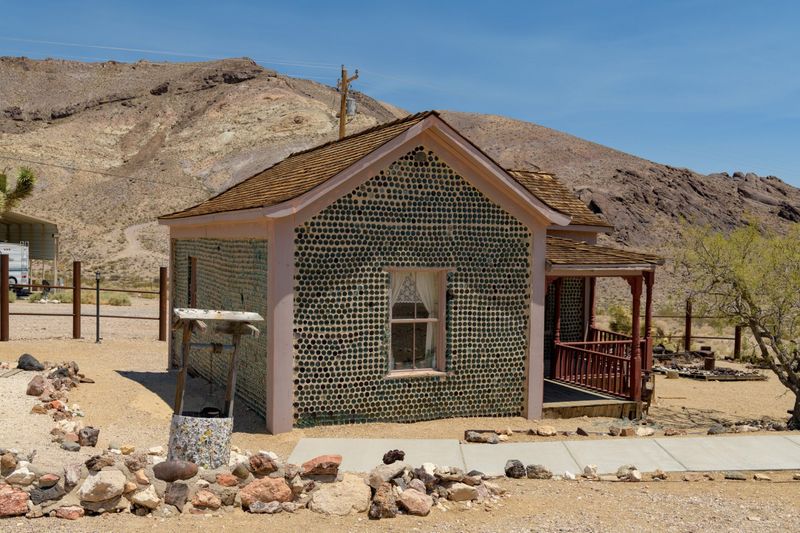
When lumber costs skyrocketed in the desert, one clever miner named Tom Kelly got creative in 1906. He collected roughly 50,000 glass bottles from local establishments and cemented them together to build an entire house. Talk about recycling before it was cool!
The walls shimmered in the sunlight like a kaleidoscope of browns and greens. It kept the inside surprisingly comfortable during scorching summers and freezing winters.
You can still visit this quirky structure today, making it one of the few buildings in Rhyolite that survived relatively intact.
The Ghostly Goldwell Open Air Museum
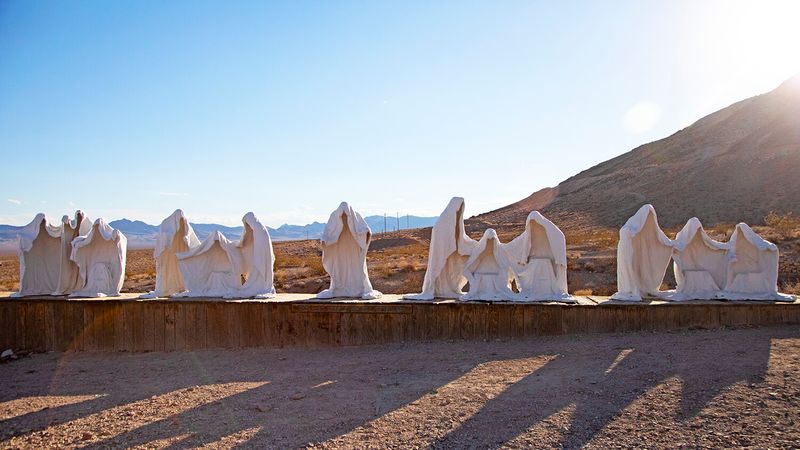
Art meets abandonment at this outdoor sculpture garden right next to the ghost town. Giant ghostly figures created by artist Albert Szukalski recreate “The Last Supper” using life-sized plaster sculptures. They stand eerily in the desert like frozen spirits watching over the ruins.
Other bizarre artworks dot the landscape, creating a surreal contrast between old and new. It’s like stepping into a Salvador Dali painting mixed with Western history.
Visitors often say the sculptures feel perfectly at home among Rhyolite’s crumbling buildings, as if the past and present merged into something magical.
The Once-Busy Train Depot

Built in 1908, this station buzzed with activity as trains hauled gold, supplies, and hopeful fortune-seekers. Three different railroad lines connected Rhyolite to the outside world, making it seem unstoppable. The depot represented progress and prosperity in the middle of nowhere.
Today, the depot building stands silent with broken windows staring blankly at empty tracks. No whistles blow, no passengers rush through its doors. It’s a powerful reminder that even the most connected places can become isolated when economic winds shift.
The structure remains surprisingly intact considering it’s been weathering desert storms for over a century.
Where Children Once Learned
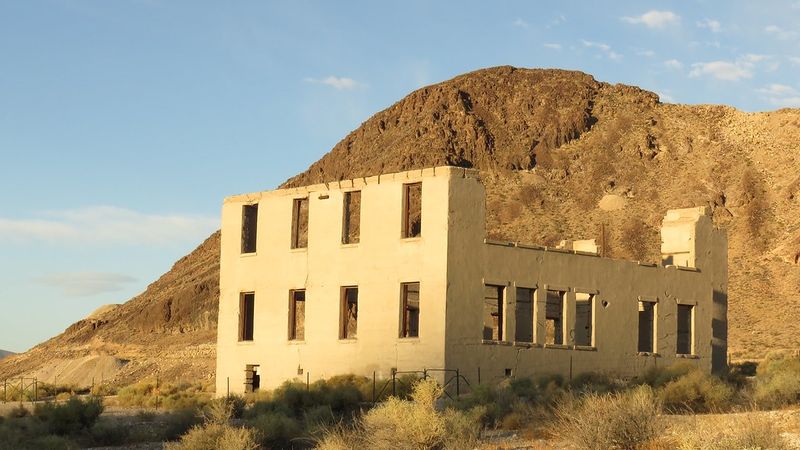
Built in 1909, the schoolhouse echoed with laughter, lessons, and the dreams of young students. Parents invested in education believing their children would inherit a thriving mining town. The two-story building had proper classrooms and represented hope for the future.
Now its walls crumble like old paper, with empty window frames staring out at nothing. Desks vanished long ago, along with the children who once fidgeted in them.
Standing inside the ruins, you can almost hear ghostly recitations of multiplication tables. It’s heartbreaking to think how quickly those educational dreams turned to dust along with everything else.
The Small But Sturdy Jail

Crime happened even in boomtowns, so Rhyolite needed a place to hold troublemakers. This compact stone building featured thick walls and tiny windows that made escape nearly impossible. Drunks, thieves, and brawlers cooled their heels inside these cramped quarters.
Surprisingly, the jail outlasted fancier buildings because of its simple, solid construction. Heavy stones stacked without much decoration meant there was less to fall apart.
Today, you can peek through the barred windows and imagine what spending a night locked up felt like. The jail stands as proof that sometimes the plainest structures survive the longest.
The Heart Of Community At Miner’s Union Hall

Built in 1906, this gathering spot hosted everything from serious labor meetings to Saturday night dances. Miners would finish brutal shifts underground, then clean up to socialize with neighbors and friends. Live music filled the air while couples twirled across wooden floors.
The hall represented more than just entertainment, it symbolized unity among workers facing dangerous conditions. They supported each other through injuries, disputes with mine owners, and personal hardships.
Now, only partial walls remain of this social hub. Still, you can sense the camaraderie that once filled this space where hardworking people found joy together.
Mona Belle’s Haunting Legend
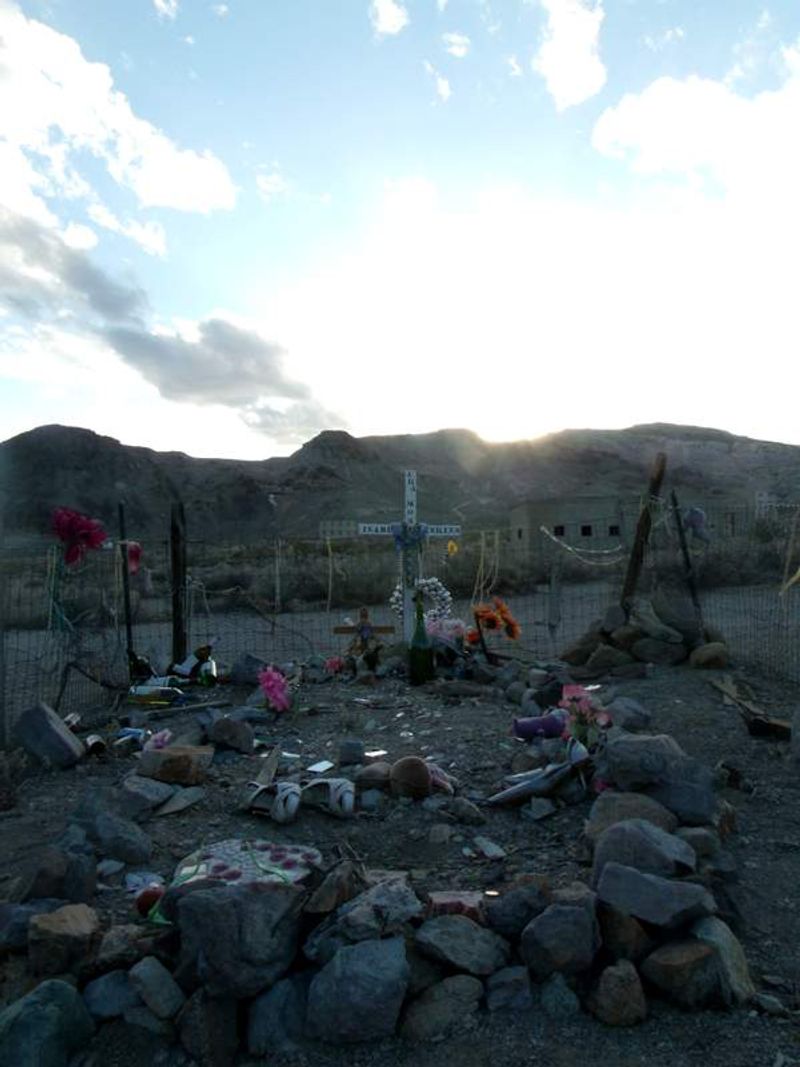
Local stories tell of a woman named Mona Belle who met a tragic end in 1908 during Rhyolite’s heyday. Some say her spirit never left the desert town where her life was stolen. Visitors report strange feelings near her burial spot, like someone’s watching them.
Skeptics laugh off ghost tales, but something about abandoned places makes supernatural stories feel possible. Cold spots, unexplained sounds, and eerie sensations get reported regularly.
Whether you believe in ghosts or not, Rhyolite’s desolate atmosphere definitely sparks the imagination. Mona Belle’s legend adds an extra layer of mystery to an already fascinating location.
A Photographer’s Paradise Today
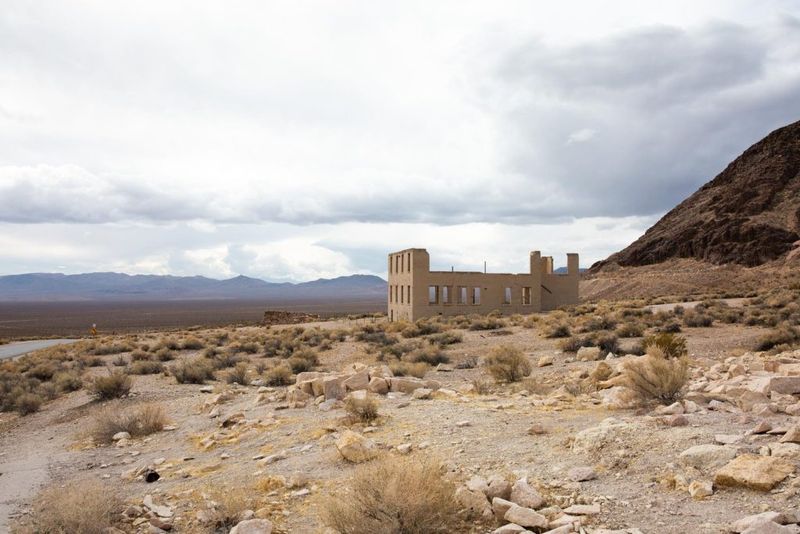
Modern visitors flock to Rhyolite not for gold but for incredible photos and history lessons. The contrast between crumbling ruins and stark desert beauty creates stunning compositions. Sunrise and sunset paint the old buildings in magical golden light.
It’s completely free to explore, making it accessible for anyone curious about the Old West. You can wander among the ruins, imagining life over a century ago. History buffs, photographers, and adventure seekers all find something special here.
Rhyolite proves that sometimes the most valuable treasures aren’t precious metals but the stories and memories left behind by those who came before us.

